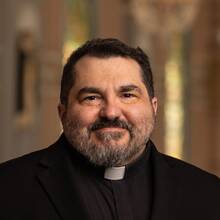How can we respond to Christ’s unique call to serve those “outside the camp?”
To understand biblical attitudes toward leprosy, it is important to realize that the malady mentioned in Leviticus is not Hansen’s disease, the ailment that today goes by the name leprosy. Hansen’s disease is a neurological ailment that is not infectious enough to warrant the elaborate quarantine that Lv 13:45-46 requires. Instead, the cluster of symptoms mentioned in Leviticus better describes fungal and parasitic skin infections. Many of these also affect leather, cloth, furniture and masonry, as Lv 13:47-14:57 describes. These diseases rendered a person “unclean,” meaning that sufferers were so highly infectious that they had to withdraw from the normal life of the community to protect others from contagion. As virulent as these conditions were, however, they were not always permanent or fatal. The biblical instructions regarding leprosy hold forth hope that the condition might clear up on its own. Leviticus includes several rituals to determine whether healing had occurred and to restore a sufferer to the community.
He remained outside in deserted places, and people kept coming to him. (Mk 1:45)
What conditions today trap people in a living death?
How can you follow Christ to serve those “outside the camp?”
The Hebrew Bible often treats leprosy as a temporary ailment sent for someone’s instruction or correction. Moses was a leper briefly (Ex 4:6-7), as was his sister Miriam (Nm 12:10-15). King Uzziah continued to reign even after he was struck with leprosy either for permitting others to practice illegal rites (2 Kgs 15:4-5) or for profaning the inner sanctum of the temple (2 Chr 26:16-21). God uses four lepers to reveal the miraculous deliverance of Samaria (2 Kgs 7:3-15). Meanwhile, the Syrian general Naaman came to Israel to be cured of his leprosy by washing in the Jordan (2 Kgs 5:10-14). Leprosy was a serious ailment that constrained a person from entering sacred or inhabited places. One could, however, realistically hope for deliverance and continue to participate in society, albeit in attenuated ways.
That situation had changed by Jesus’ day. Hansen’s disease, which is progressive and incurable, had come to Israel about two centuries before Christ, probably as a result of commercial and military encounters with tropical nations. Fear of this new disease, coupled with leprosy’s reputation as a divine chastisement, led many to treat it as more than an illness or temporary punishment. It represented a living death that alienated individuals not just from their own diseased bodies but from family, society, nation and God. Jesus’ power over leprosy was distinct from his general power to heal (Mt 10:8) because in healing lepers, Jesus performed an act akin to raising the dead.
In last week’s Gospel passage, Mark recounted that Jesus’ healing of an individual caused a rapid growth of his fame in Capernaum and then throughout all of Galilee. In this week’s passage, people from everywhere mob Jesus in such numbers that he cannot even enter the towns along his route. To continue his mission to outcasts, Jesus had to live like one, dwelling in deserted places “outside the camp.”
This holds a lesson for our own discipleship. Each Christian hears a unique call from the Spirit to continue Jesus’ mission. Like Jesus, we must make our abode “outside the camp.” In the Spirit we will find those places—deserted by others, but inhabited by those longing for grace—in which we can complete the mission that Christ has entrusted to us.
[The Word is a weekly column of Scripture reflections published by America for over 70 years. You can sign up for a weekly newsletter of our newest reflections along with selections from our archive here. The Word podcast is available for free on iTunes.]
This article also appeared in print, under the headline “Life Outside the Camp,” in the February 5, 2018, issue.








